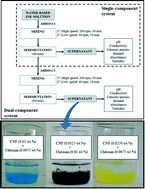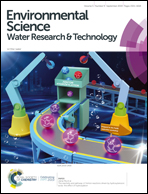Cellulose nanofibers and chitosan to remove flexographic inks from wastewaters
Abstract
Flexographic printing technology is an economical, productive, low maintenance and versatile technology. However, the removal of these inks by the traditional flotation process during paper recycling is not possible since they remain dissolved in the waters, making necessary the development of alternative methods. Recent studies have revealed the potential use of nanocellulose (NC) combined with a cationic polyacrylamide to remove flexographic inks from wastewater. The use of a natural polymer, such as chitosan, would be an important improvement of this treatment because NC and chitosan are the two most abundant natural polymers with interesting properties, such as non-toxicity and biodegradability. Therefore, in this study the decolorization of three flexographic inks (copper phthalocyanine blue, carbon black and diarylide yellow) by the sequential addition of cellulose nanofibers, produced from recycled paper, and chitosan has been evaluated. Results show that this eco-friendly approach has high potential for the removal of water-based inks with an almost 100% reduction of turbidity and ink from the wastewater. Moreover, the final sludge containing nanocellulose and inks could be used to reinforce the pulp of the middle layers of carton board, improving the mechanical properties of the product and reducing waste generation.



 Please wait while we load your content...
Please wait while we load your content...